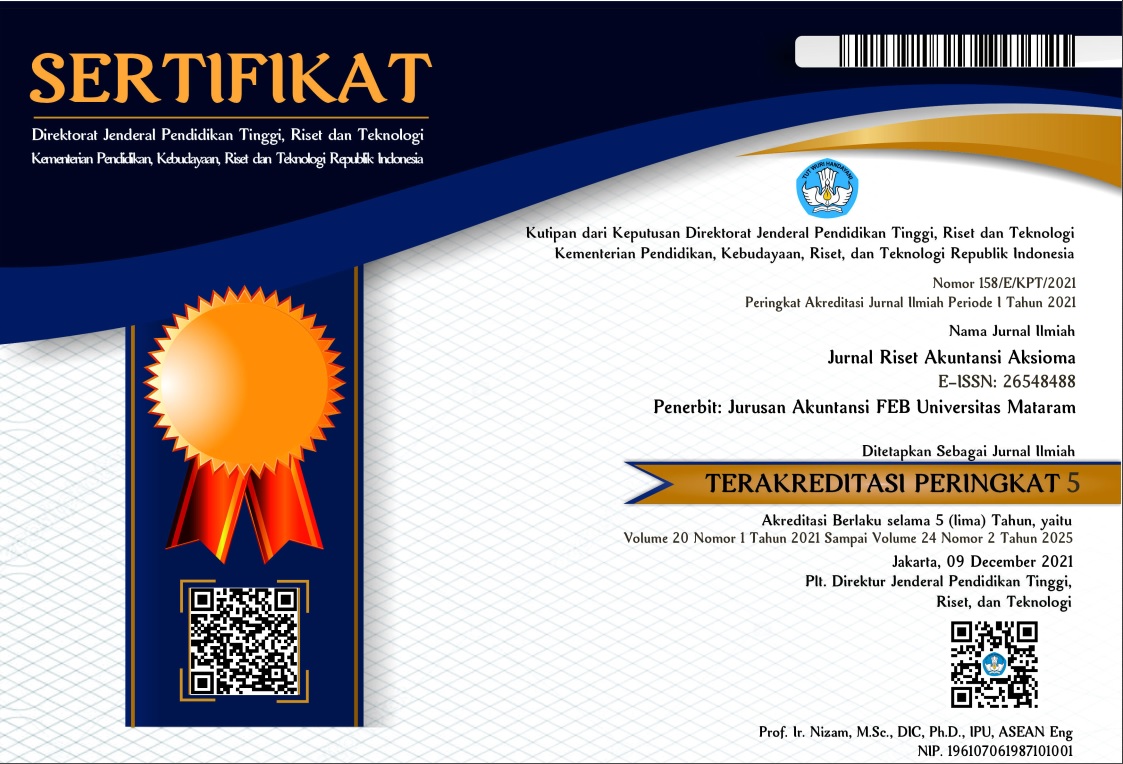ANALISIS PENGENDALIAN INTERNAL TERHADAP PIUTANG DAGANG PADA PT. CENTRAPLAST INDONESIA
Abstract
This study aims to determine and analyze the effectiveness of internal control over trade receivables at PT Centraplast Indonesia in accordance with COSO theory. The type of research used is descriptive qualitative research. The data sources used are primary data and secondary data obtained from interviews, observation and documentation. The data analysis technique in this study is triangulation analysis. The result of this study is that the internal control system for trade receivables at PT Centraplast Indonesia has not been able to run effectively. This means that the occurrence of accounts receivable problems at PT Centraplast Indonesia is not effective and is not immediately anticipated. PT. Centraplast Indonesia does not have a company internal control system designed to provide reasonable assurance regarding the achievement of objectives, and does not provide confidence in company operations, financial reporting.
Keywords:Accounts receivable, Internal control
References
Makaria, B. (2015). EVALUASI ATAS SISTEM AKUNTANSI PENJUALAN KREDIT DAN PENERIMAAN KAS SEBAGAI UPAYA MENINGKATKAN PENGENDALIAN INTERN (Studi pada PT. KASIN Malang). Jurnal Administrasi Bisnis S1 Universitas Brawijaya, 18(1), 85363.
Wati, T. A. (2019). Anaisis sistem pengendalian internal piutang pada PT. Perusahaan Pupuk Nusantara Cabang Medan. 8(5), 55.
Wuisan, J. S. (2018). Analisis Efektivitas Pengendalian Intern Piutang Lease Pada PT. Finansia Multi Finance Tomohon. Angewandte Chemie International Edition, 6(11), 951–952., 1(4), 10–27.
Copyright (c) 2023 Fitria Febriani

This work is licensed under a Creative Commons Attribution 4.0 International License.




















